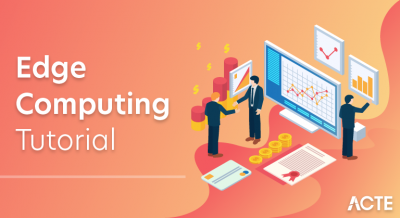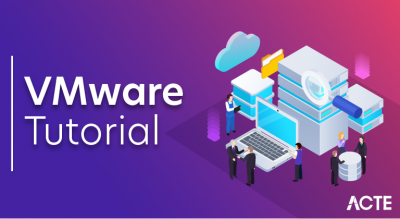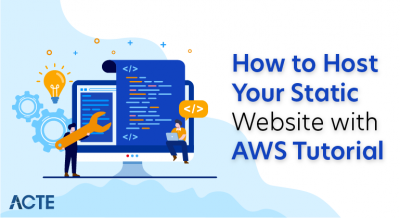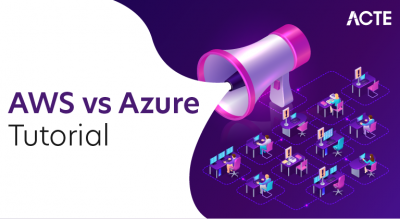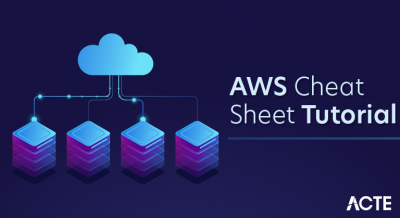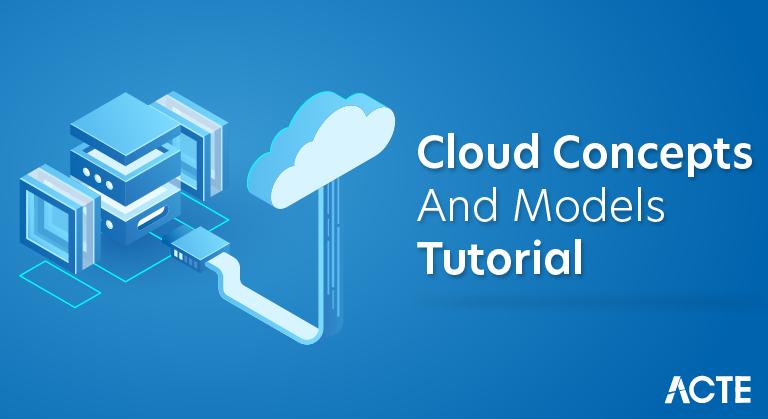
What Is Cloud?
Before we start to understand the definition and other aspects of cloud computing, we need to first understand the meaning and significance of cloud networks. The combination of the software and hardware units which are located at the centralized servers inclusive of data storage units and can be accessed through the Internet from anywhere by the customers is known as the Cloud Network.
These servers are located far apart from each other and are based on various organization’s data-centers. With access to cloud networks, the organizations neither have to manage the servers and machines physically nor need to run software on their clients separately. The major requirement is a good speed and high bandwidth Internet connection.
The cloud permits the client desktop or end-user to access the data which can be in the form of text, voice, video, etc and software applications from any of the remote locations as the storage and computation take place at the servers which are located at the network operating centers, instead of saving them locally on the end-user system.
Example: With the use of cloud we can access our WhatsApp and Facebook account in the new phone with all the data (like all the photos, videos and chat history) intact in its place as was in the old phone.
The Google Drive and Dropbox are also the example of the cloud e-mail providers on which the user can save personal data, can share it with other users and access them anytime from any remote end device and location. Just an internet connection is required for accessing the data.
The use of cloud networks also minimizes the software organization infrastructure overall cost and overhead as they need not build up and manage their setup for running the various applications, they got the cloud platform.
The cloud also makes it easier for organizations to work in different cities and countries all together on the same platform and can share and access data from various parts of the organizations. This has increased the growth of software organizations rapidly all over the world with minimal use of assets and a huge margin of income.

Definition Of Cloud Computing:
It is an internet-based method of computing, where the end-user can get access to the data servers on a paid basis and the virtual shared servers provision the infrastructure, software applications, platform, storage, and other resources to the user.
All types of services that a digital system can provide will be delivered in the cloud computing model. The consumers can avail of services on the “cloud” without even understanding how to manage the applications included in it. Thus the users can focus on the business development processes of their project without getting involved in the infrastructure management and installation of the project model.
The users using cloud computing don’t own the physical infrastructure of the unit, noticeably they only pay for the part of the cloud which they used to the third party or cloud service provider. Thus they pay only as per the usage and can rent the services of different kinds from more than one cloud service provider and. They can pay them accordingly as per the usage.
The Image Below Shows The Cloud Computing Architecture:

Characteristics Of Cloud Computing :
It offers several attractive features for both businesses and consumers.
Some of the features are listed below:
Device and location independence: The users can connect to the cloud network from any location and any of the device, example, laptop or smartphones, as they are accessible through the Internet and servers that are centrally located (off-site, maintained by a service provider) regardless of any specific location-centric.
Pay as per-use: The users need to pay only for the resources they have used out of the pool of applications and services available and need not pay for the overall infrastructure.
Multi-tenancy: It offers sharing of services, software applications, platform and their costs among large scale users. The same physical infrastructure such as servers and hardware equipment is shared between many users but all of them retain information privacy and data security.
The resource pool is large enough to serve multiple organizations and customers at the same time without an interruption in services between one another. This feature also makes the effective utilization of the resources at the right time which usually has a trend of having less utilization such as 10% to 20% during peak hours by performing load-balancing and sharing activity.
Reliability: The reliability of the system is improved by using multiple redundant servers for applications and data storage so that in case of failure the data can be restored easily.
Productivity and Performance: The productivity of the projects using cloud networks for the application running increases as multiple users work on the same database and software simultaneously. Thus it will give better output by analyzing in their way at the same instance of time.
How Does Cloud Computing Work?
- Assume that you are an executive at a very big corporation. Your particular responsibilities include to make sure that all of your employees have the right hardware and software they need to do their jobs.
- To buy computers for everyone is not enough. You also have to purchase software as well as software licenses and then provide these softwares to your employees as they require.
- Whenever you hire a new employee, you need to buy more software or make sure your current software license allows another user. It is so stressful that you have to spend lots of money.
- But, there may be an alternative for executives like you. So, instead of installing a suite of software for each computer, you just need to load one application.
- That application will allow the employees to log-in into a Web-based service which hosts all the programs for the user that is required for his/her job.
- Remote servers owned by another company and that will run everything from e-mail to word processing to complex data analysis programs. It is called cloud computing, and it could change the entire computer industry.
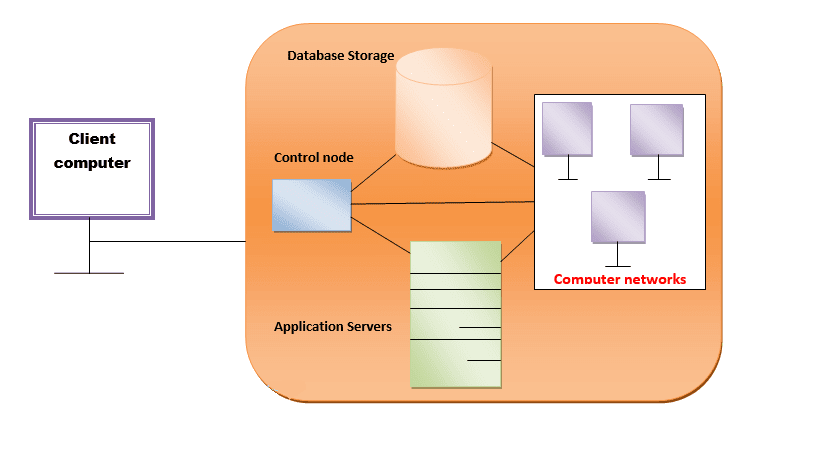
- In a cloud computing system, there is a significant workload shift. Local computers have no longer to do all the heavy lifting when it comes to run applications.
- But cloud computing can handle that much heavy load easily and automatically. Hardware and software demands on the user’s side decrease.
- The only thing the user’s computer requires to be able to run is the cloud computing interface software of the system, which can be as simple as a Web browser and the cloud’s network takes care of the rest.
Types Of Cloud Models
The most common types of cloud models are discussed as below:
Private Cloud: This kind of cloud infrastructure is built up to manage only a single peculiar organization. Here, the applications, data security, and control of the services are dedicated to one organization only and not shared by any other organization.
The private cloud can be managed internally by the internal host and also can be managed externally by the third party resources.
There are two kinds of private clouds, one is On-premise Private cloud, which is hosted internally by the organization members and IT team. They also bear all the infrastructure and operational costs of the cloud. But they have the overall control over the utilization of the applications of the cloud network.
The second one is an Externally-hosted Private cloud which is used by a solo organization but all the infrastructure and operations of the cloud are managed by the third party which has specialization in the cloud services. The third party also guarantees the authenticity of the privacy of the use of resources of cloud exclusively for one organization only.
Public Cloud: The public cloud service is managed and run by an external cloud service provider and is inclusive of several kinds of data servers and application software that are located at different data centers. The public cloud platform can be shared by more than one organization.
By deploying the virtual machine and server’s model, the resources can be shared by different companies at one time which is also known as multitenancy situations. Under such a situation, multiple users are sharing space and renting within one server.
The example of public cloud providers is Amazon AWS, Google, Yahoo and Microsoft which owns the cloud infrastructure and gives access to the end-user on an Internet basis. In this kind of model, the end-user doesn’t have access and visibility to control the security and other operations of the cloud network.
But the use of public cloud is very economical for the consumers as they can access different kinds of data, software applications and can store their data, share resources with others, use the e-mail platform and other services in cloud infrastructure without actually owing all resources.
When more than one organization or more than one government PSU’s are working together on one project then they can use the public cloud platform for testing software tools and sharing their resources and day to day activity reports. They all can work together without being physically present with one another.
Hybrid Cloud: The hybrid cloud includes the services and infrastructure of both private and public cloud networks which are bought together to offer the advantages of both the models but will remain as the unique entities.
The hybrid cloud offers more flexibility to the computing model as while depending upon the usage of resources, one can either choose a private cloud network for confidential services that needs a high level of security or, can use a public cloud network for routine management of resources.
The hybrid cloud architecture is a combination of both on-premises and third-party based servers. It offers a much efficient business environment. The issue with this model is that the consumers have to keep a track record of multiple cloud platforms used and also maintain the coordination between them so that all remain in the sink for any communication.
Each of the hybrid networks must have at least one public network.

Multi-Cloud: Multi-cloud refers to multiple cloud networks, mostly public clouds and can also be a private cloud network. Thus in cloud computing, when an organization incorporates more than one public cloud network from different cloud service providers to use applications, storage, and other services on a different platform is known as the Multi-Cloud network.
The Multi-Cloud network can also be used by organizations for providing redundancy and backup for their critical resources as using different vendors for different services will provide good QoS.
In this network, since the storage and services of a network are divided into multiple vendor networks therefore the migration of services is easy if one of the provider infrastructures falls back. Thus this provides flexibility and redundancy to the organization. In this way using multiple cloud networks is also considered as cost-effective.
But, there are also some issues with this model. In the case of deploying services to multiple vendors, they need to interface with each other for communication with one another related to the management of services.
This will increase the complexity of the operation and management of the project and also introduce the latency in the work model of the project. At the same time, it will become vulnerable to various kinds of virus attacks as they can be accessed by more than one organization and vendors.

Cloud Service Models
There are the following three types of cloud service models :
- Infrastructure as a Service (IaaS)
- Platform as a Service (PaaS)
- Software as a Service (SaaS)
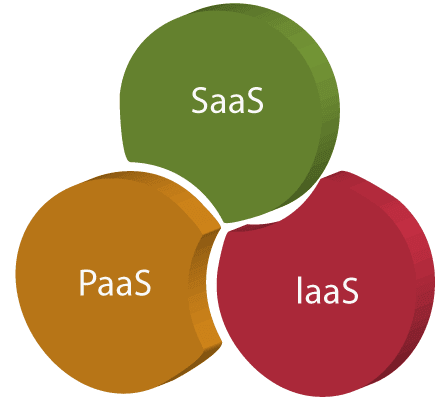
Infrastructure As A Service (IaaS)
IaaS is also known as Hardware as a Service (HaaS). It is a computing infrastructure managed over the internet. The main advantage of using IaaS is that it helps users to avoid the cost and complexity of purchasing and managing the physical servers.
Characteristics Of IaaS
There are the following characteristics of IaaS :
- Resources are available as a service
- Services are highly scalable
- Dynamic and flexible
- GUI and API-based access
- Automated administrative tasks
Example: DigitalOcean, Linode, Amazon Web Services (AWS), Microsoft Azure, Google Compute Engine (GCE), Rackspace, and Cisco Metacloud.
Platform As A Service (PaaS)
PaaS cloud computing platform is created for the programmer to develop, test, run, and manage the applications.
Characteristics Of PaaS
There are the following characteristics of PaaS :
- Accessible to various users via the same development application.
- Integrates with web services and databases.
- Builds on virtualization technology, so resources can easily be scaled up or down as per the organization’s need.
- Support multiple languages and frameworks.
- Provides an ability to “Auto-scale”.
Example: AWS Elastic Beanstalk, Windows Azure, Heroku, Force.com, Google App Engine, Apache Stratos, Magento Commerce Cloud, and OpenShift.
Software As A Service (SaaS)
SaaS is also known as “on-demand software”. It is a software in which the applications are hosted by a cloud service provider. Users can access these applications with the help of internet connection and web browser.
Characteristics Of SaaS
There are the following characteristics of SaaS :
- Managed from a central location
- Hosted on a remote server
- Accessible over the internet
- Users are not responsible for hardware and software updates. Updates are applied automatically.
- The services are purchased on the pay-as-per-use basis
Example: BigCommerce, Google Apps, Salesforce, Dropbox, ZenDesk, Cisco WebEx, ZenDesk, Slack, and GoToMeeting.
Difference Between IaaS, PaaS, And SaaS
The below table shows the difference between IaaS, PaaS, and SaaS :
| IaaS | Paas | SaaS |
|---|---|---|
| It provides a virtual data center to store information and create platforms for app development, testing, and deployment. | It provides virtual platforms and tools to create, test, and deploy apps. | It provides web software and apps to complete business tasks. |
| It provides access to resources such as virtual machines, virtual storage, etc. | It provides runtime environments and deployment tools for applications. | It provides software as a service to the end-users. |
| It is used by network architects. | It is used by developers. | It is used by end users. |
| IaaS provides only Infrastructure. | PaaS provides Infrastructure+Platform. | SaaS provides Infrastructure+Platform +Software. |
Cloud Computing Applications
Cloud service providers provide various applications in the field of art, business, data storage and backup services, education, entertainment, management, social networking, etc.
The most widely used cloud computing applications are given below –
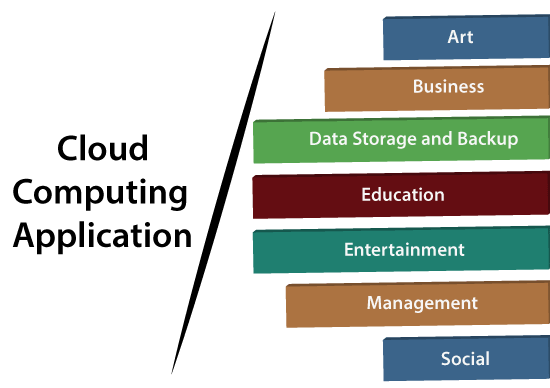
1. Art Applications
Cloud computing offers various art applications for quickly and easily design attractive cards, booklets, and images. Some most commonly used cloud art applications are given below:
- Moo : Moo is one of the best cloud art applications. It is used for designing and printing business cards, postcards, and mini cards.
- Vistaprint : Vistaprint allows us to easily design various printed marketing products such as business cards, Postcards, Booklets, and wedding invitations cards.
- Adobe Creative Cloud : Adobe creative cloud is made for designers, artists, filmmakers, and other creative professionals. It is a suite of apps which includes PhotoShop image editing programming, Illustrator, InDesign, TypeKit, Dreamweaver, XD, and Audition.
2. Business Applications
Business applications are based on cloud service providers. Today, every organization requires the cloud business application to grow their business. It also ensures that business applications are 24*7 available to users.
There are the following business applications of cloud computing :
- Mail Chimp : Mail Chimp is an email publishing platform which provides various options to design, send, and save templates for emails.
- Salesforce : Salesforce platform provides tools for sales, service, marketing, e-commerce, and more. It also provides a cloud development platform.
- Chatter : Chatter helps us to share important information about the organization in real time.
- Bitrix24 : Bitrix24 is a collaboration platform which provides communication, management, and social collaboration tools.
- Paypal : Paypal offers the simplest and easiest online payment mode using a secure internet account. Paypal accepts the payment through debit cards, credit cards, and also from Paypal account holders.
- Slack : Slack stands for Searchable Log of all Conversation and Knowledge. It provides a user-friendly interface that helps us to create public and private channels for communication.
- Quickbooks : Quickbooks works on the terminology “Run Enterprise anytime, anywhere, on any device.” It provides online accounting solutions for the business. It allows more than 20 users to work simultaneously on the same system.
3. Data Storage And Backup Applications
Cloud computing allows us to store information (data, files, images, audios, and videos) on the cloud and access this information using an internet connection. As the cloud provider is responsible for providing security, so they offer various backup recovery application for retrieving the lost data.
A list of data storage and backup applications in the cloud are given below :
- Box.com : Box provides an online environment for secure content management, workflow, and collaboration. It allows us to store different files such as Excel, Word, PDF, and images on the cloud. The main advantage of using box is that it provides drag & drop service for files and easily integrates with Office 365, G Suite, Salesforce, and more than 1400 tools.
- Mozy : Mozy provides powerful online backup solutions for our personal and business data. It schedules automatically back up for each day at a specific time.
- Joukuu : Joukuu provides the simplest way to share and track cloud-based backup files. Many users use joukuu to search files, folders, and collaborate on documents.
- Google G Suite : Google G Suite is one of the best cloud storage and backup application. It includes Google Calendar, Docs, Forms, Google+, Hangouts, as well as cloud storage and tools for managing cloud apps. The most popular app in the Google G Suite is Gmail. Gmail offers free email services to users.
4.Education Applications
Cloud computing in the education sector becomes very popular. It offers various online distance learning platforms and student information portals to the students. The advantage of using cloud in the field of education is that it offers strong virtual classroom environments, Ease of accessibility, secure data storage, scalability, greater reach for the students, and minimal hardware requirements for the applications.
There are the following education applications offered by the cloud :
- Google Apps for Education : Google Apps for Education is the most widely used platform for free web-based email, calendar, documents, and collaborative study.
- Chromebooks for Education : Chromebook for Education is one of the most important Google’s projects. It is designed for the purpose that it enhances education innovation.
- Tablets with Google Play for Education : It allows educators to quickly implement the latest technology solutions into the classroom and make it available to their students.
- AWS in Education : AWS cloud provides an education-friendly environment to universities, community colleges, and schools.
5. Entertainment Applications
Entertainment industries use a multi-cloud strategy to interact with the target audience. Cloud computing offers various entertainment applications such as online games and video conferencing.
- Online games : Today, cloud gaming becomes one of the most important entertainment media. It offers various online games that run remotely from the cloud. The best cloud gaming services are Shaow, GeForce Now, Vortex, Project xCloud, and PlayStation Now.
- Video Conferencing Apps : Video conferencing apps provides a simple and instant connected experience. It allows us to communicate with our business partners, friends, and relatives using a cloud-based video conferencing. The benefits of using video conferencing are that it reduces cost, increases efficiency, and removes interoperability.
6.Management Applications
Cloud computing offers various cloud management tools which help admins to manage all types of cloud activities, such as resource deployment, data integration, and disaster recovery. These management tools also provide administrative control over the platforms, applications, and infrastructure.
Some important management applications are :
- Toggl : Toggl helps users to track allocated time period for a particular project.
- Evernote : Evernote allows you to sync and save your recorded notes, typed notes, and other notes in one convenient place. It is available for both free as well as a paid version. It uses platforms like Windows, macOS, Android, iOS, Browser, and Unix.
- Outright : Outright is used by management users for the purpose of accounts. It helps to track income, expenses, profits, and losses in real-time environment.
- Go To Meeting : Go To Meeting provides Video Conferencing and online meeting apps, which allows you to start a meeting with your business partners from anytime, anywhere using mobile phones or tablets. Using GoToMeeting app, you can perform the tasks related to the management such as join meetings in seconds, view presentations on the shared screen, get alerts for upcoming meetings, etc.
7. Social Applications
Social cloud applications allow a large number of users to connect with each other using social networking applications such as Facebook, Twitter, Linkedln, etc.
There are the following cloud based social applications :
- Facebook : Facebook is a social networking website which allows active users to share files, photos, videos, status, more to their friends, relatives, and business partners using the cloud storage system. On Facebook, we will always get notifications when our friends like and comment on the posts.
- Twitter : Twitter is a social networking site. It is a microblogging system. It allows users to follow high profile celebrities, friends, relatives, and receive news. It sends and receives short posts called tweets.
- Yammer : Yammer is the best team collaboration tool that allows a team of employees to chat, share images, documents, and videos.
- LinkedIn : LinkedIn is a social network for students, freshers, and professionals.
Conclusion
In this tutorial, we have understood the concept of cloud computing in the networking system. We have also understood various kinds of Cloud models and types of Cloud networks with the help of the examples and figures.


